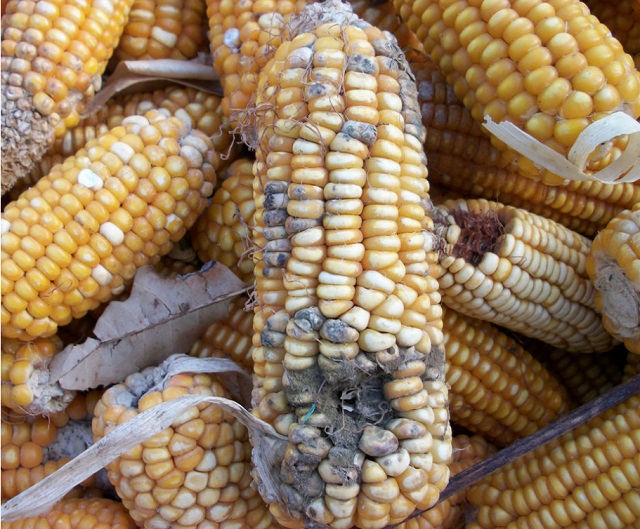
Can the EAC survive?
Kampala, Uganda | JULIUS BUSINGE | On March 05 Kenya announced an abrupt ban on imports of maize grain from Uganda and Tanzania.
It turned out to be an ugly fumble. According to details that emerged later, Kenya’s move was not communicated to either Uganda or Tanzania directly in the diplomatically channels.
Instead, Kenya’s Agriculture and Food Authority wrote to the Commissioner of Customs in the Kenya Revenue Authority stopping any further importation of maize from Uganda and Tanzania with immediate effect.
The letter cited high levels of mycotoxins, poisonous germs, in the maize imported from the two countries.
According to the World Health Organisation, mycotoxins are naturally occurring toxins produced by moulds (fungi) and can be found in food. The moulds grow on different crops and foodstuffs including cereals, nuts, spices, and dried fruits, apples often under warm and humid conditions.
The maize ban landed like a bombshell. But it was not a total surprise because it came at a time when Kenya has made a habit of frustrating the smooth entry of other Ugandan goods into its market. Previously frustrated goods include dairy, sugar, and poultry. In all cases, Kenya cites either gaps in standards or rules of origin.
Sections of Ugandan traders and Members of Parliament immediately called for retaliation by Uganda to block the entry of Kenyan goods including mangoes, Irish potatoes and rice. But other players were opposed to the retaliation move.
This could have pilled pressure on government to call for a crisis meeting. On March 10, a crisis meeting was held at the Ministry of Trade, Industry and Cooperatives headquarters along Parliament Avenue in Kampala.
Top ministers: Amelia Kyambadde (Trade), Matia Kasaija (Finance), Vincent Bamulangaki Ssempijja (Agriculture) and Henry Oryem Okello (foreign affairs) alongside technical staff from those ministries attended.
The agenda was to forge ways of dealing with the abrupt ban for Uganda’s maize into Kenya’s market. Kyambadde chaired.
After nearly five-hours of the meeting, Kyambadde emerged with four main resolutions. Number one was to write a protest note to Kenya demonstrating Uganda’s disagreement on how the ban on maize was handled; two, to cause a ministerial meeting between Uganda and Kenya; three, to cause a meeting of the two heads of state (Kenya and Uganda) and four, was to work with local traders to find alternative markets for the maize.
But on March 11, Kenya lifted the ban. Kenya’s Agriculture Cabinet Secretary Peter Munya said the issue had been taken out of context. The reality is that pressure had been mounted because, despite the rhetoric, Kenya cannot survive without Ugandan maize.
Although Kenya’s produces a lot of maize internally, its consumption is equally high and it often suffers maize shortages. According to most statistics, Kenyans consume about 4 million tonnes of maize per year. Meanwhile, it rarely meets its production target of 40 million 90kg bags or approximately 3.6 million tonnes. And with a growing population, demand for maize in Kenya is projected to hit 60 million 90kg bags in the next three years. The deficit is covered by imports.
Although official maize imports have been declining in recent years and they have tended to fluctuate sharply over the years, Kenya’s maize imports remain high.
In 2017, for example, Kenya imported 1.4 million tonnes of maize; the highest volumes in the last 10 years. The lowest was 100,000 tonnes in 2010. In 2020, it imported 400,000 tonnes. But the year before that it had imported just 270,000 tonnes.
Most of the maize that enters Kenya comes from Uganda and most of the imports are informal and undocumented. In 2018, for example, according to statistics from the World Bank’s World Integrated Trade Solution (WITS), Kenya imported 313, 256 metric tonnes of maize from Uganda. The rest came from Zambia and Tanzania.
But Uganda’s maize famers need the Kenyan market.
Chris Kaijuka, the chairman of the Grain Council of Uganda told The Independent on March 10 that the ban on maize exports to Kenya should be a concern to both Uganda and Kenya because they all benefit.
He said the maize which goes to Kenya is bought by Kenyan traders directly from Ugandan rural farmers and transported by Kenyan trucks.
He said Kenya consumes about 90% of the maize that Uganda produces, but about the same percentage of the crop is traded informally.
According to Uganda Bureau of Statistics, on annual basis, Uganda produces 2.8 million metric tons of maize and close to 90% of this is exported as grain to Kenya.
Julius Kalonde from the Uganda Maize Exporters Association said they have on average been exporting in excess of 300, 000 tons of maize to Kenya.
 The Independent Uganda: You get the Truth we Pay the Price
The Independent Uganda: You get the Truth we Pay the Price


